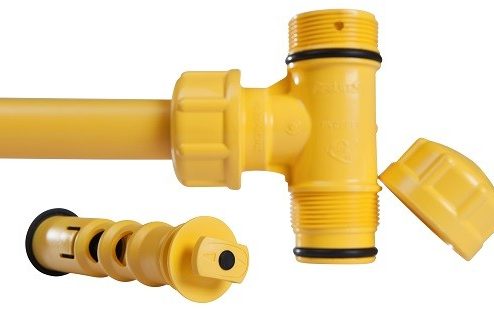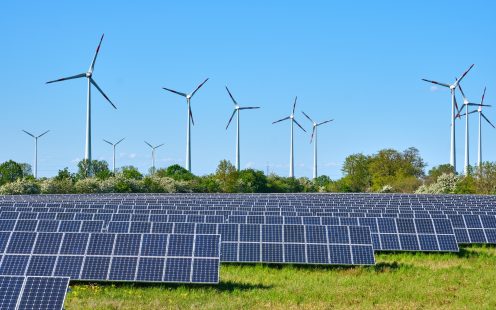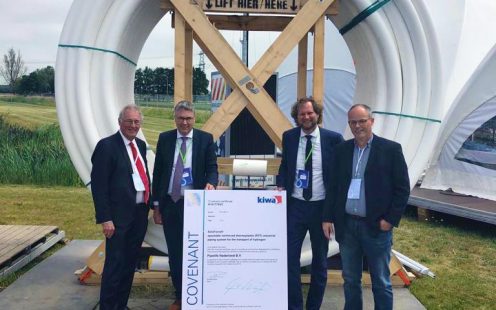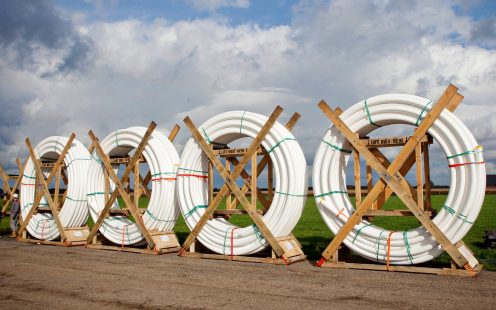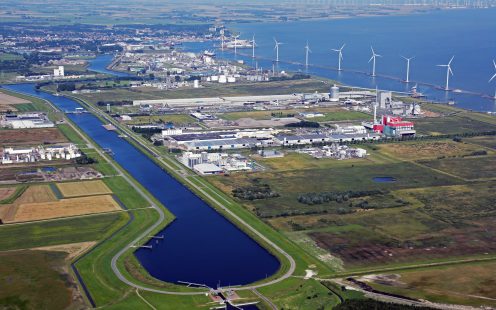DECARBONIZING OUR ECONOMY WITH SUSTAINABLE HYDROGEN INFRASTRUCTURE
Many experts see hydrogen as a viable candidate in helping us towards a carbon freer economy via the Grand Energy Transition. Before we can imagine heating, transport, and electricity entirely green, there are however quite some challenges to overcome – technical as well as economical. The good news is, we are well on the way there and industries, scientists, public bodies and environmentalists alike are working on solutions. Our solution for green hydrogen: providing a safe, long lasting and cost-efficient hydrogen piping infrastructure.
THE ROLE OF HYDROGEN IN INCREASING THE SHARE OF RENEWABLES
Over recent years, our economy has seen a major increase in the integration of green energy. Investments in harvesting wind power, solar energy, and other renewables are ongoing and have made them an economically viable alternative. However, what is keeping electricity grids from further enlarging the part of renewables in electricity supply is the fact that renewables fluctuate in output. In other words, their generation depend on environmental conditions which cannot be influenced: e.g. how much wind blows, how long it is sunny, etc.
The answer to the fluctuation problem is energy storage and this is where hydrogen gas comes in. The possibility to convert electricity into storable hydrogen gas and hydrogen back to electricity, offers numerous possibilities that could enable the Grand Energy Transition, which in turn could help us reach the Paris Agreement targets in decarbonizing our economy from the industry sector through transportation to electrifying and heating homes.
Green hydrogen – meaning hydrogen produced from renewable energy – is seen as a big potential accelerator towards a low-carbon economy. A lot of research and development is happening around its production, transportation and application. Although the technologies themselves have for a large part reached maturity and have been tried and tested, the costs are still very high. This limits the application of hydrogen across sectors and regions.
"What we can contribute is safer, better affordable complete hydrogen infrastructure. From the windfarm to the customer, be it for industry, for transport or heating buildings, we offer the full range. And it’s as simple as this: By accelerating the use of hydrogen, we accelerate the move towards decarbonizing economy", says Harald Schwarzmayr, CEO Pipelife.
PIPELIFE'S SOLUFORCE DEVELOPS SUSTAINABLE ALTERNATIVE FOR HIGH-PRESSURE HYDROGEN TRANSPORTATION
Regarding transportation and distribution of hydrogen via pipes and in close cooperation with Groningen Seaports, Pipelife's SoluForce has come up with a groundbreaking development representing a significant milestone with a major impact on the feasibility of (green) hydrogen. The spoolable Reinforced Thermoplastic industrial Piping Systems (RTP) are worldwide the first and only non-metallic pipes that are certified for hydrogen applications up to 42 bars operating pressures.
Professor of Future Energy Systems at the TU Delft, one of Europe’s leading hydrogen experts, Professor Ad van Wijk was impressed by SoluForce Flexible Composite Pipe Systems and its suitability for high-pressure hydrogen applications: “Green Hydrogen is an energy carrier that can transport and store large quantities of energy from solar and wind at low costs. It is necessary for the implementation of the Paris Climate Goals, as well as to make the economy stronger and greener. I believe that Pipelife's SoluForce pipe solutions will play a vital role in facilitating the energy transition by providing affordable and proven hydrogen transportation and distribution solutions.”
Offering solutions that help cut costs and make operations safer, more durable and efficient SoluForce Hydrogen Tight Pipe Systems will significantly contribute to the hydrogen value chain and will facilitate the Grand Energy Transition.
SAFE AND SOUND HYDROGEN LOW-PRESSURE SOLUTIONS FOR THE GAS GRID
Also gas suppliers benefit from hydrogen certified non-metallic pipes: Pipelife Netherlands enables the safe and economic transportation of hydrogen with its certified PVC gas pipe systems for low pressure applications (up to 200 mbar) in conventional gas networks.
With a total length of 136.600 km and an estimated value of € 20 to 40 billion (depending on calculation method) the gas network in the Netherlands is an important asset to the economy. The certification makes sure the Dutch gas grid is fit for the future. The application of hydrogen and biogas will stay of great importance in the energy mix. In harsh winters with little sun and wind, these networks will heat and energize households and industry reliably.
The opportunity to mix also green hydrogen into the usual gas blend will increase the share of renewable energy in the gas grid. A rollout across big gas users such as Germany, UK, Italy, the Netherlands, etc. could considerably decrease carbon dioxide emissions from heating commercial and domestic properties (only water is set free when hydrogen is combusted with oxygen).
Although Pipelife Netherland’s gas pipe solutions are designed to cope with 100% hydrogen, other parts of the gas network and buildings appliances would still need smaller technical adaptations in the burners and measuring devices. Interestingly, we would go back to the same gas properties as the Dutch were using in the 1950s.
Increasing safety measures for hydrogen WIth gas-stop
Safety plays an important role in gas infrastructure, and even more so for hydrogen, which is generally perceived to present a higher risk. Pipelife Netherlands is therefore working in close cooperation with Dutch network operators to make Pipelife Gas-Stop fit for hydrogen applications. Gas-Stop is an excess flow valve, which automatically shuts off a gas pipe in cases of damage. It has been developed by Pipelife Austria some 25 years ago and has ever since been installed in more than 40 countries around the globe keeping people and properties safe.“Further developing Gas-Stop for hydrogen is a logical step for us at Pipelife. Its certification will help increase also the acceptance of hydrogen in gas supply. We want to provide all that matters in hydrogen transportation: a long lasting, safe and economic solution that makes the energy transition possible”, says Aart Jan van der Meijden, Pipelife Netherlands General Manager.
